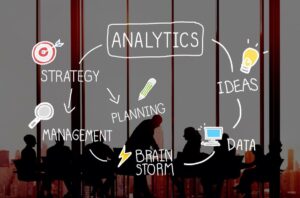The Education Blog

The Science of Decision-Making: How to Think Like a Genius
Each day, we make many choices. These can be small choices, like lunch options, or big decisions, such as changing careers or investing money. While some decisions seem intuitive, others require deep analysis and strategic thinking. What separates average decision-makers from those who seem to make consistently brilliant choices? The answer is in cognitive psychology, decision-making methods, and critical thinking skills.
In this guide, you’ll learn about decision-making science. You’ll find practical strategies to boost your reasoning skills. Plus, you’ll discover how to think like a genius for everyday and complex choices.
The Psychology of Decision-Making
Decision-making is choosing between options by looking at possible outcomes. The human brain, however, does not always operate rationally. Psychological factors, cognitive biases, and emotions often influence our choices.
The Two Systems of Decision-Making
Nobel Prize-winning psychologist Daniel Kahneman says that humans use two systems for decision-making:
- System 1 (Fast Thinking): This is the intuitive, automatic, and emotional part of the brain. It helps us make quick decisions based on instinct or past experiences. For example, reaching for an umbrella when you see dark clouds.
- System 2 (Slow Thinking): This system involves deliberate, analytical, and logical reasoning. It takes more mental effort and is used for tough or new decisions. This includes solving math problems or planning big projects.
While System 1 is faster, it is prone to biases and errors. System 2, on the other hand, offers greater accuracy but is mentally taxing. Learning to balance both systems is key to effective decision-making.
Cognitive Biases That Distort Decisions
Even the smartest people can fall for cognitive biases. These are errors in thinking that can change how we make decisions. Common biases include:
- Confirmation bias: Favouring information that supports pre-existing beliefs and ignoring contradictory evidence.
- Overconfidence bias: Overestimating the accuracy of one’s knowledge or abilities, which can lead to poor decisions.
- Anchoring bias: Relying too heavily on the first piece of information encountered, even if it is irrelevant.
- Availability heuristic: Basing decisions on readily available information rather than considering the full range of evidence.
Recognising and mitigating these biases is essential for making smarter, more rational decisions.

Strategies to Improve Decision-Making Skills
Use the OODA Loop for Faster, Smarter Choices
The OODA Loop (Observe, Orient, Decide, Act) was first created for military strategy. It is a strong decision-making tool.
- Observe: Gather relevant information and understand the situation.
- Orient: Analyse the information, identify patterns, and assess potential outcomes.
- Decide: Choose the best course of action based on the data.
- Act: Implement the decision and evaluate its effectiveness.
The OODA Loop helps you adapt and learn continuously. It allows you to make quicker, smarter choices in high-pressure and everyday situations.
Apply First Principles Thinking
First principles thinking, made famous by Elon Musk, means breaking problems down into basic truths. This approach helps avoid relying on assumptions.
To apply this method:
- Identify assumptions: Challenge conventional wisdom and preconceived notions.
- Deconstruct the problem: Break it down into its most basic elements.
- Rebuild from the ground up: Use logic and reasoning to develop original, innovative solutions.
This method helps you make better and more creative choices. It lets you steer clear of old or faulty ideas.
Use the Eisenhower Matrix for Prioritisation
When making decisions about time management or task prioritisation, use the Eisenhower Matrix:
- Urgent and important: Do these tasks immediately.
- Important but not urgent: Schedule these for later.
- Urgent but not important: Delegate these tasks.
- Neither urgent nor important: Eliminate or postpone these.
This matrix helps you decide where to invest your time and energy. It boosts productivity.

Practice Probabilistic Thinking
Probabilistic thinking is about estimating how likely different outcomes are. It helps us make decisions based on these probabilities. Instead of thinking in black-and-white terms, consider the odds of each potential scenario.
For example:
- When you invest in stocks, look at the chances of various market conditions. Don’t just make all-or-nothing choices.
- When making business decisions, consider the risks and benefits. Use statistical data and forecasts to help you.
This mindset reduces overconfidence and encourages more realistic, data-driven decisions.
Conduct Pre-Mortems to Avoid Future Mistakes
A pre-mortem is a technique where you imagine that your decision has failed and analyse why it went wrong. This helps identify potential risks and blind spots before making a final choice.
To conduct a pre-mortem:
- Visualise a future where your decision has failed.
- Identify possible reasons for the failure.
- Adjust your plan or decision to avoid these pitfalls.
This method enhances foresight and reduces the risk of errors.
Genius-Level Decision-Making Habits
Think in Mental Models
Mental models are frameworks that simplify complex concepts, helping you make better decisions. Successful thinkers often use multiple mental models to analyse problems from different perspectives. Common mental models include:
- Occam’s Razor: The simplest explanation is usually the correct one.
- Second-Order Thinking: Consider the long-term and indirect consequences of a decision.
- Inversion: Instead of asking how to succeed, ask how you might fail and avoid those actions.
Using diverse mental models helps you make more comprehensive and effective decisions.
Embrace Iterative Decision-Making
Genius thinkers rarely view decisions as final. They use iterative decision-making. This means they continue to refine and improve their choices with new information.
- Test and learn: Make small, low-risk decisions and evaluate the results.
- Adjust based on feedback: Refine your strategy as you gather more insights.
- Stay flexible: Be willing to course-correct if necessary.
This flexible method lowers the fear of errors. It also leads to better results over time.

Use Decision Journals
A decision journal helps you record your choices and think about how well they worked. Include the following details:
- The problem you were trying to solve.
- The factors influencing your decision.
- Your reasoning and expectations.
- The actual outcome.
Checking your decision journal often helps you find patterns. It also sharpens your critical thinking and improves your future decisions.
Transform Everyday Choices with Genius-Level Decision-Making
To be a great decision-maker, you need more than just smarts. Understand cognitive biases, use strategic frameworks, and keep improving all the time. Practising mental models helps you think clearly. Techniques like the OODA Loop and pre-mortems guide your decisions. Embracing iterative learning also enhances your choices. This way, you can achieve better results in all areas of life.
Begin using these proven strategies today. They will help you improve your decision-making skills and think like a genius.









